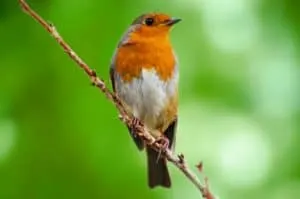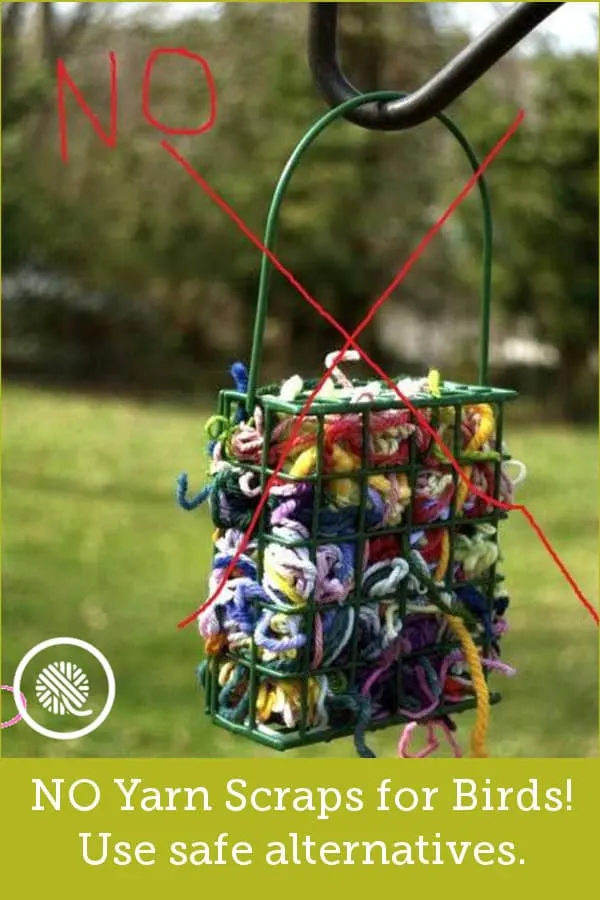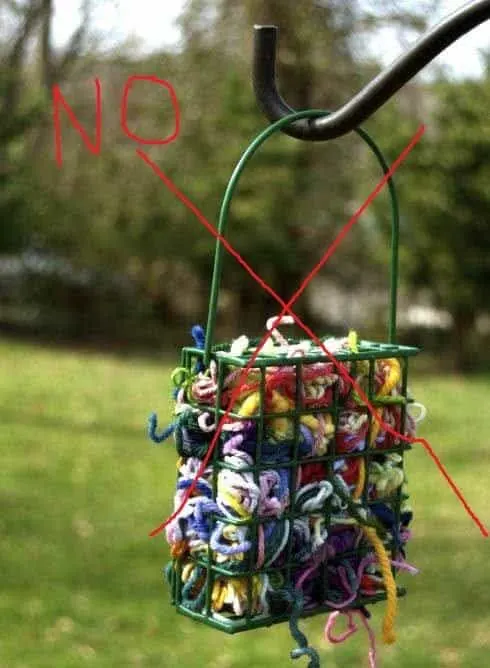PSA: Yarn scraps can be dangerous for birds! Hey, crafters, we all have lots of yarn. (Probably more than we even want to admit.) And we all end up with small scraps after finishing a project and weaving in our ends. Upon seeing a post from the Carolina Waterfowl Rescue about the dangers of putting out yarn for nest-building I knew I had to pass on the info. I shared it with my GoodKnitKisses Facebook followers and asked if I could quote them on my blog.
I hope this article helps you. Please share this blog with your friends and followers! Thanks! -Kristen
The yarn scraps photos and quote are used with permission by Carolina Waterfowl Rescue.

PSA Dangerous Yarn Scraps for Birds
Carolina Waterfowl Rescue
Posted on Facebook on March 1, 2016 9:18a CST
“We’ve been seeing a lot of online posts lately suggesting using yarn scraps, twine or other material as outside nesting material for songbirds. While the intentions are good, please do NOT do this.
Yarn and any type of string, twine and even human hair can easily become tangled around birds legs, neck etc. and cut off circulation causing serious injury or even death. We get in many baby songbirds every year missing limbs due to string like materials in a nest.
If you want to have nesting materials in your yard, we suggest purchasing pre-made nesting material or use these natural alternatives.
Cloth Strips: Natural fibers – such as cotton, wool, jute, and burlap – make perfect bird nesting materials. Cut old fabric into pieces 3” to 6” long and no more than 1” wide. Longer pieces are too much for birds to handle and can even strangle them.
Small Yard Debris: Pine straw, wheat straw, and tiny twigs make good bird nest building materials.
Grass Clippings: One of the most common nesting materials, grass clippings can be gathered into balls or simply left mulched into your lawn.
Animal Hair: If you brush or clip your animals, save the fur! It makes a wonderfully soft lining for bird nests. Just don’t use any hair or fur that’s been treated with flea dips or insect repellents.
Cocoa Fiber: Recycle worn-out linings of hanging baskets for bird nesting material.
Plants and Seeds: Fluffy seeds and plants, such as cattails, make good bird nesting materials.
Cloth Batting: Wool or cotton batting cut into 3”- 6” strips makes good nesting material.
Feathers: Providing feathers for nesting material is a great way to recycle old down pillows!
Moss: Sphagnum or Spanish moss make great bird nesting material (make sure it’s not been chemically treated).”
The most important thing to remember is to use natural items that have not been exposed to dangerous chemicals. Another item that is commonly put out is dryer lint. This should also be avoided because it can absorb water and contain harsh detergents and fabric softeners.
PIN IT!



Gwallace
Saturday 13th of May 2023
Thank you for the information.
Teresa
Sunday 30th of January 2022
Is making an igloo out of yarn bad for birds
Janice
Saturday 15th of January 2022
I was wondering. I know you say not to use yarn scraps, and I understand why. But I have alpaca yarn scraps that are actually more like just alpaca fibers. They are very soft, and very short. Would these be a danger also?
SockMonkey
Wednesday 1st of February 2023
@Janice, short fibers including animal fur (in the form of yarn or straight from brushing) is no longer recommended by the Audubon. It has been shown to kill birds the same way longer fibers / hairs do.
Grace Gardiner-Aquila
Sunday 31st of March 2019
I see that yarns pieces are inches long that people put out for wildlife, which can cause these issues....my question/suggestion....cutting yarn pieces approx. 1 inch...these lengths won't entangle their feet and cause injury. Your thoughts...……...
Grace Gardiner-Aquila
Sunday 31st of March 2019
I see that yarns pieces are inches long that people put out for wildlife, which can cause these issues....my question/suggestion....cutting yarn pieces approx. 1 inch...these lengths won't entangle their feet and cause injury. Your thoughts...……...
Jassyj
Tuesday 9th of March 2021
No.
Roseanne Salyer
Sunday 25th of August 2019
How about you don't use the yarn at all no matter what the length. It is not good for them to eat either. When you mow or rake your yard leave a big pile of clippings and twigs. Use your yarn leftovers to stuff amigurumi or small pillows.